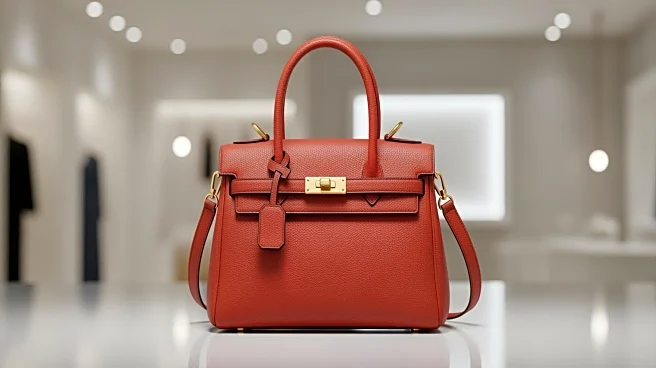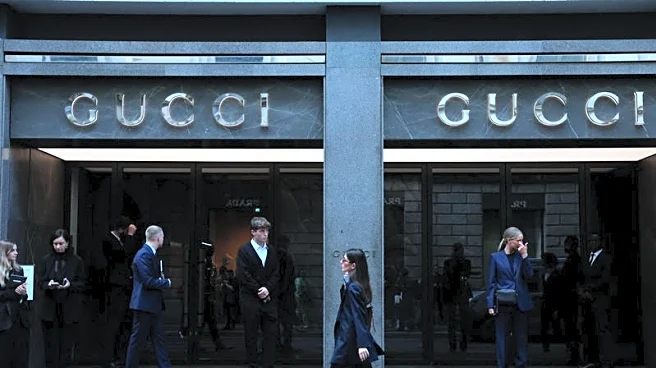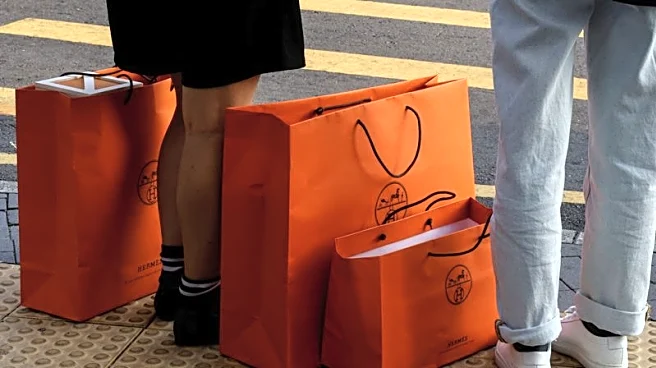What's Happening?
Salvatore Ferragamo, the Italian luxury brand, has reported a 1.7% increase in quarterly sales, surpassing analyst expectations. The company achieved revenues of €221 million ($258 million) for the July-September
period, driven by significant growth in North America, which offset a slowdown in the Asian market. Despite challenges in Asia, Ferragamo noted slight improvements in the region during the third quarter. The company has been without a CEO since March, following the departure of Marco Gobbetti, and is actively searching for a new leader. Ferragamo has also lost its finance chief, Pierre La Tour, in September. The company has initiated a turnaround plan to address losses, which has positively impacted its retail channel performance.
Why It's Important?
Ferragamo's revenue growth is significant as it indicates resilience in the luxury sector despite broader market challenges, particularly in Asia. The company's ability to achieve double-digit growth in North America highlights the region's importance as a key market for luxury goods. The ongoing search for a new CEO is crucial for Ferragamo's strategic direction and future growth. The turnaround measures implemented by the company are essential to stabilize its financial performance and regain investor confidence. The luxury sector's recovery signs, as noted by other major brands like Hermès and LVMH, suggest potential positive trends for Ferragamo and its peers.
What's Next?
Ferragamo's search for a new CEO remains a priority, as leadership is critical for executing its turnaround strategy and navigating market challenges. The company will continue to focus on its action plan to stem losses and improve retail performance. Stakeholders will be watching for further developments in the Asian market, which remains a significant area of concern for luxury brands. The potential for mergers or acquisitions, although not currently pursued by Ferragamo, could be a topic of interest if market conditions change.
Beyond the Headlines
The luxury sector's dynamics, including tariff impacts and regional demand fluctuations, present ongoing challenges for brands like Ferragamo. The company's strategic decisions, including leadership appointments and market focus, will have long-term implications for its competitive positioning. The broader economic environment, including consumer spending patterns and geopolitical factors, will continue to influence luxury market performance.












